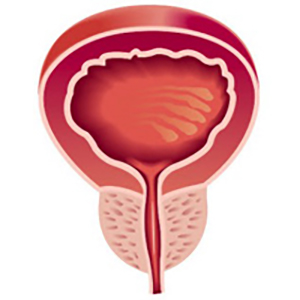The effects of method of anaesthesia on the safety and effectiveness of Radical Retropubic Prostatectomy

Accepted: October 31, 2022
All claims expressed in this article are solely those of the authors and do not necessarily represent those of their affiliated organizations, or those of the publisher, the editors and the reviewers. Any product that may be evaluated in this article or claim that may be made by its manufacturer is not guaranteed or endorsed by the publisher.
Authors
Objective: The aim of this study is to determine if patients undergoing radical retropubic prostatectomy with localized prostate cancer under combined (epidural-spinal) anaesthesia have any benefit over patients undergoing the procedure under general anaesthesia.
Material and Methods: Patients with clinically localised prostate cancer, scheduled for radical retropubic prostatectomy, were allocated to undergo the operation under either general anaesthesia (GA) or under combined (epidural-spinal) (CESA) anaesthesia. Several parameters were recorded both preoperatively (medical history, biometric data, PSA, biopsy Gleason score) and postoperatively (blood pressure, heart rate, haemoglobin levels, operation time and total hospital stay). In addition, mean arterial pressure, change in heart rate, total blood loss, blood transfusions, SAS score, intravenous fluid administration and operation time were also noted down intraoperatively. Patient pain levels and total satisfaction were evaluated using appropriate questionnaires. At the 12-month follow-up, biochemical recurrence using PSA levels and urinary continence status were evaluated.
Results: A total of 60 patients were included (30 in each group). Intraoperatively, mean MAP and heart rate change was higher in the GA group (MAP+7,46, HR+27) and mean SAS was higher in the CESA group (+0.93). The time needed for patients’ recovery was faster (-3.5 min) and hospitalization was shorter for patients in the CESA group (-0.6 days). Intraoperative blood loss, time for induction and duration of operation were not significantly different. Mean postoperative drop of haemoglobin was greater in the GA group (+0.56) while blood transfusions, VAS pain scores and amount of intravenous fluids did not differ significantly between the two groups. No complications were reported. Patient satisfaction and urinary continence were comparable between the groups and there were no cases of biochemical recurrence.
Conclusions: Radical retropubic prostatectomy can safely be performed under combined (spinal epidural anaesthesia, with possible benefits of lower blood loss, less post-operative complications and earlier discharge. Both procedures have equal oncological and functional outcomes at the 12-month follow-up.
How to Cite

This work is licensed under a Creative Commons Attribution-NonCommercial 4.0 International License.
PAGEPress has chosen to apply the Creative Commons Attribution NonCommercial 4.0 International License (CC BY-NC 4.0) to all manuscripts to be published.

 https://doi.org/10.4081/aiua.2022.4.396
https://doi.org/10.4081/aiua.2022.4.396



